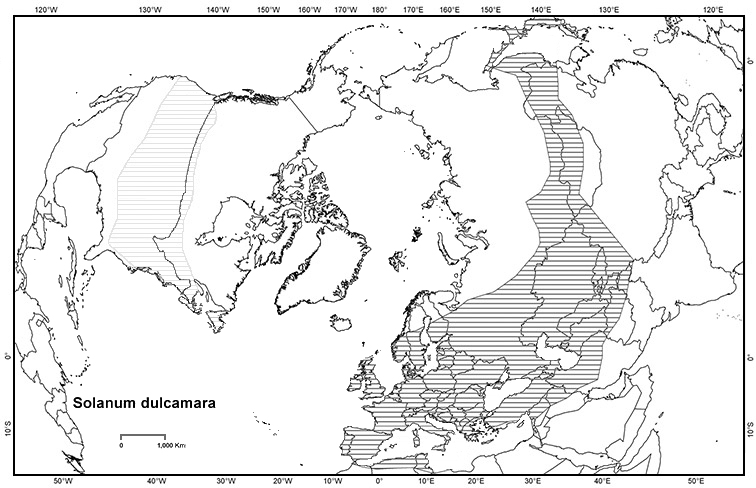|
Scrobipalpa Costella
''Scrobipalpa costella'' is a moth of the family Gelechiidae. It is found in western Europe. The wingspan is . The head is ochreous, sometimes grey-sprinkled. Terminal joint of palpi shorter than second. Forewings reddish -ochreous, sometimes suffusedly irrorated with dark fuscous; a dark fuscous triangular costal blotch extending from 1/4 to 2/3 and reaching fold, including the black stigmata, first discal followed by another black dot obliquely beneath it; an indistinct pale angulated fascia at 3/4; often a dark fuscous terminal suffusion. Hindwings 1, grey. The larva is greyish green; dorsal and subdorsal lines sometimes darker; 2 and 3 dark purplish-brown; head and plate of 2 black. Adults appear in September and spend the winter. After overwintering, they are on wing till June. The larvae feed on ''Solanum dulcamara''. They mine Mine, mines, miners or mining may refer to: Extraction or digging * Miner, a person engaged in mining or digging *Mining, extraction of miner ... [...More Info...] [...Related Items...] OR: [Wikipedia] [Google] [Baidu] |
Henry Noel Humphreys
Henry Noel Humphreys (1810–1879), Humphreys, Henry Noel, in Dictionary of National Biography, 1885-1900, Volume 28. was a British illustrator, naturalist, entomologist, and numismatist. Humphreys was born on 4 January 1810 in Birmingham, the son of James Humphreys, and was educated at King Edward's School there. He studied medieval manuscripts in Italy as a young man, and became an accomplished scholar in numerous subjects. In addition to his entomological texts, Humphreys wrote works on ancient Greek and Roman coins, archaeology, and the art of writing and printing. He died on 10 June 1879. Works *''A Record of the Black Prince.'' A Series of original passages from the chroniclers relating to the career and exploits of Edward the Black Prince; enriched with highly-wrought illuminations from different Manuscripts referring to the history of the period. In a carved and pierced binding. London: Longman and Co, 1850. *''British Moths and Their Transformations''. With John Ob ... [...More Info...] [...Related Items...] OR: [Wikipedia] [Google] [Baidu] |
John Obadiah Westwood
John Obadiah Westwood (22 December 1805 – 2 January 1893) was an English entomologist and archaeologist also noted for his artistic talents. He published several illustrated works on insects and antiquities. He was among the first entomologists with an academic position at Oxford University. He was a natural theologian, staunchly anti-Darwinian, and sometimes adopted a quinarian viewpoint. Although he never travelled widely, he described species from around the world on the basis of specimens, especially of the larger, curious, and colourful species, obtained by naturalists and collectors in England. Life and work Westwood was born in a Quaker family in Sheffield, the son of medal and die maker, John Westwood (1774–1850) and Mary, daughter of Edward Betts. He went to school at the Friends' School, Sheffield and later at Lichfield when the family moved there. He apprenticed briefly to become a solicitor and worked briefly as a partner in a firm but gave up a career in law ... [...More Info...] [...Related Items...] OR: [Wikipedia] [Google] [Baidu] |
Moth
Moths are a paraphyletic group of insects that includes all members of the order Lepidoptera that are not butterflies, with moths making up the vast majority of the order. There are thought to be approximately 160,000 species of moth, many of which have yet to be described. Most species of moth are nocturnal, but there are also crepuscular and diurnal species. Differences between butterflies and moths While the butterflies form a monophyletic group, the moths, comprising the rest of the Lepidoptera, do not. Many attempts have been made to group the superfamilies of the Lepidoptera into natural groups, most of which fail because one of the two groups is not monophyletic: Microlepidoptera and Macrolepidoptera, Heterocera and Rhopalocera, Jugatae and Frenatae, Monotrysia and Ditrysia.Scoble, MJ 1995. The Lepidoptera: Form, function and diversity. Oxford, UK: Oxford University Press; 404 p. Although the rules for distinguishing moths from butterflies are not well est ... [...More Info...] [...Related Items...] OR: [Wikipedia] [Google] [Baidu] |
Gelechiidae
The Gelechiidae are a family of moths commonly referred to as twirler moths or gelechiid moths. They are the namesake family of the huge and little-studied superfamily Gelechioidea, and the family's taxonomy has been subject to considerable dispute. These are generally very small moths with narrow, fringed wings. The larvae of most species feed internally on various parts of their host plants, sometimes causing galls. Douglas-fir (''Pseudotsuga'') is a host plant common to many species of the family, particularly of the genus '' Chionodes'', which as a result is more diverse in North America than usual for Gelechioidea. By the late 20th century, over 900 genera with altogether more than 4,500 species were placed here, with about 650 genera known from North America alone. While these figures are certainly outdated, due to the many revisions to superfamily Gelechioidea and new descriptions of twirler moths, they still serve to show the enormous biodiversity contained in this ... [...More Info...] [...Related Items...] OR: [Wikipedia] [Google] [Baidu] |
Europe
Europe is a large peninsula conventionally considered a continent in its own right because of its great physical size and the weight of its history and traditions. Europe is also considered a subcontinent of Eurasia and it is located entirely in the Northern Hemisphere and mostly in the Eastern Hemisphere. Comprising the westernmost peninsulas of Eurasia, it shares the continental landmass of Afro-Eurasia with both Africa and Asia. It is bordered by the Arctic Ocean to the north, the Atlantic Ocean to the west, the Mediterranean Sea to the south and Asia to the east. Europe is commonly considered to be separated from Asia by the watershed of the Ural Mountains, the Ural River, the Caspian Sea, the Greater Caucasus, the Black Sea and the waterways of the Turkish Straits. "Europe" (pp. 68–69); "Asia" (pp. 90–91): "A commonly accepted division between Asia and Europe ... is formed by the Ural Mountains, Ural River, Caspian Sea, Caucasus Mountains, and the Blac ... [...More Info...] [...Related Items...] OR: [Wikipedia] [Google] [Baidu] |
Scrobipalpa Costella Mined And Discoloured Leaves Of Solanum Dulcamara
''Scrobipalpa'' is a genus of moths in the family Gelechiidae. ''Euscrobipalpa'' has sometimes been treated as a distinct subgenus, or even as a full genus, but is generally no longer recognised as valid, following Ponomarenko & Park (2007).Ponomarenko, M.; Park, K.-T. 2007: Two new species and a new record of Gelechiidae (Lepidoptera) from Korea. ''Zootaxa'', (1437): 55-60Abstract & excerpt ee p. 59/ref> Species *''Scrobipalpa abai'' Povolný, 1977 *'' Scrobipalpa abstrusa'' Huemer & Karsholt, 2010 *''Scrobipalpa acuminatella'' (Sircom, 1850) *''Scrobipalpa acuta'' (Povolný, 2001) *'' Scrobipalpa adaptata'' (Povolný, 2001) *''Scrobipalpa admirabilis'' Bidzilya, 2021 *''Scrobipalpa aestivans'' Falkovitsh & Bidzilya, 2003 *''Scrobipalpa afromontana'' Bidzilya, 2021 *'' Scrobipalpa aganophthalma'' (Meyrick, 1931) *''Scrobipalpa agassizi'' Bidzilya, 2021 *''Scrobipalpa ahasver'' Povolný, 1969 *''Scrobipalpa albofusca'' Povolný, 1971 *''Scrobipalpa albostriata'' Povolný, 1977 *' ... [...More Info...] [...Related Items...] OR: [Wikipedia] [Google] [Baidu] |
Wingspan
The wingspan (or just span) of a bird or an airplane is the distance from one wingtip to the other wingtip. For example, the Boeing 777–200 has a wingspan of , and a wandering albatross (''Diomedea exulans'') caught in 1965 had a wingspan of , the official record for a living bird. The term wingspan, more technically extent, is also used for other winged animals such as pterosaurs, bats, insects, etc., and other aircraft such as ornithopters. In humans, the term wingspan also refers to the arm span, which is distance between the length from one end of an individual's arms (measured at the fingertips) to the other when raised parallel to the ground at shoulder height at a 90º angle. Former professional basketball player Manute Bol stood at and owned one of the largest wingspans at . Wingspan of aircraft The wingspan of an aircraft is always measured in a straight line, from wingtip to wingtip, independently of wing shape or sweep. Implications for aircraft design an ... [...More Info...] [...Related Items...] OR: [Wikipedia] [Google] [Baidu] |
The Moths And Butterflies Of Great Britain And Ireland
''The Moths and Butterflies of Great Britain and Ireland'' (abbreviated to ''MBGBI'' or ''MOGBI'') is a multi-volume reference work on the Lepidoptera of the British Isles. The original publisher of this series was Curwen Books who published volumes 1 and 9. In 1983 Harley Books took over publishing the series. The earlier volumes were reprinted. From 1 April 2008 following the retirement of Annette and Basil Harley, Apollo Books acquired Harley Books. It was decided, that Apollo Books would continue and conclude the series with volume 5 on Tortricidae, volume 6 on Pyralidae and Pterophoridae, and volume 8 on Geometridae. At the same time they took over the remaining stock of the previous seven volumes of the series. From 1 January 2013, Apollo Books announced that all Harley Books titles and the majority of the Apollo Books titles, have been taken over by the Dutch publisher Brill Publishers. The change was necessary to ensure that the book series can continue to be published ... [...More Info...] [...Related Items...] OR: [Wikipedia] [Google] [Baidu] |
Solanum Dulcamara
''Solanum dulcamara'' is a species of vine in the genus ''Solanum'' (which also includes the potato and the tomato) of the family Solanaceae. Common names include bittersweet, bittersweet nightshade, bitter nightshade, blue bindweed, Amara Dulcis, climbing nightshade, felonwort, fellenwort, felonwood, poisonberry, poisonflower, scarlet berry, snakeberry, trailing bittersweet, trailing nightshade, violet bloom, and woody nightshade. It is native to Europe and Asia, and widely naturalised elsewhere, including North America. Overview It occurs in a very wide range of habitats, from woodlands to scrubland, hedges and marshes. ''Solanum dulcamara'' is a very woody herbaceous perennial vine, which scrambles over other plants, capable of reaching a height of 4 m where suitable support is available, but more often 1–2 m high. The leaves are 4–12 cm long, roughly arrowhead-shaped, and often lobed at the base. The flowers are in loose clusters of 3–20, 1–1.5 cm acros ... [...More Info...] [...Related Items...] OR: [Wikipedia] [Google] [Baidu] |
Leaf Miner
A leaf miner is any one of numerous species of insects in which the larval stage lives in, and eats, the leaf tissue of plants. The vast majority of leaf-mining insects are moths ( Lepidoptera), sawflies (Symphyta, the mother clade of wasps), and flies ( Diptera). Some beetles also exhibit this behavior. Like woodboring beetles, leaf miners are protected from many predators and plant defenses by feeding within the tissues of the leaves, selectively eating only the layers that have the least amount of cellulose. When attacking ''Quercus robur'' (English oak), they also selectively feed on tissues containing lower levels of tannin, a deterrent chemical produced in great abundance by the tree. The pattern of the feeding tunnel and the layer of the leaf being mined is often diagnostic of the insect responsible, sometimes even to species level. The mine often contains frass, or droppings, and the pattern of frass deposition, mine shape, and host plant identity are useful to de ... [...More Info...] [...Related Items...] OR: [Wikipedia] [Google] [Baidu] |
Moths Described In 1845
Moths are a paraphyletic group of insects that includes all members of the order Lepidoptera that are not butterflies, with moths making up the vast majority of the order. There are thought to be approximately 160,000 species of moth, many of which have yet to be described. Most species of moth are nocturnal, but there are also crepuscular and diurnal species. Differences between butterflies and moths While the butterflies form a monophyletic group, the moths, comprising the rest of the Lepidoptera, do not. Many attempts have been made to group the superfamilies of the Lepidoptera into natural groups, most of which fail because one of the two groups is not monophyletic: Microlepidoptera and Macrolepidoptera, Heterocera and Rhopalocera, Jugatae and Frenatae, Monotrysia and Ditrysia.Scoble, MJ 1995. The Lepidoptera: Form, function and diversity. Oxford, UK: Oxford University Press; 404 p. Although the rules for distinguishing moths from butterflies are not well establi ... [...More Info...] [...Related Items...] OR: [Wikipedia] [Google] [Baidu] |






